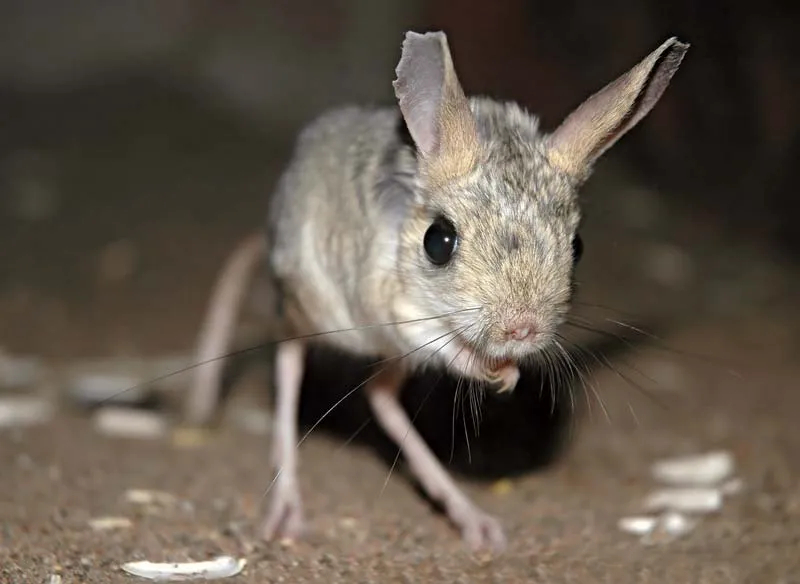Jerboa
The jerboa, a small and captivating creature inhabiting arid regions of Asia and Northern Africa, is a remarkable member of the rodent family. This diminutive mammal, known for its unique adaptations, has carved out a niche for itself in the challenging desert ecosystems where it thrives.
With its distinct appearance, the jerboa is easily recognized by its elongated hind legs and a lengthy tail. These adaptations are crucial for its survival in the sandy landscapes it calls home. The hind legs enable the jerboa to execute remarkable leaps and bounds, allowing it to traverse the uneven terrain and evade predators with agility. Its tail serves as a counterbalance during these leaps, contributing to its exceptional mobility in the desert environment.
Jerboas come in various species, each adapted to their specific habitats, but they share common characteristics. Their fur is often sandy or pale in color, providing effective camouflage against the arid backdrop. Their large eyes, adapted for nocturnal living, allow them to navigate the darkness and spot potential threats or sources of food.
These remarkable rodents have also evolved to minimize their water needs, a crucial adaptation in their arid environments. Jerboas obtain most of their water from the seeds and plants they consume, significantly reducing their reliance on external water sources. This water-efficient lifestyle is an essential strategy for survival in regions where water is scarce.
Jerboas are primarily herbivores, feeding on seeds, plants, and occasionally insects. Their diet is well-suited to the desert landscape, where vegetation might be sparse, and they have developed efficient ways to extract nutrients from their food.
















